Garter snakes, with their striking patterns and agile movements, have long captured our fascination. But have you ever wondered about the intricacies of their behavior, or just how far they can travel?
Garter snakes can travel impressive distances, especially during hibernation season. Some have been known to journey as far as 20 miles to reach their preferred communal dens in places like Manitoba, Canada. Their adaptability and agility make them one of the most mobile snake species.
In this article, we delve deep into the world of garter snakes, exploring their physical adaptations, habitats, and unique behaviors.
From their impressive travel capabilities to their communal hibernation patterns, we’ll uncover the secrets of these remarkable reptiles.
Join us as we journey through the life and habits of one of North America’s most widespread snakes.
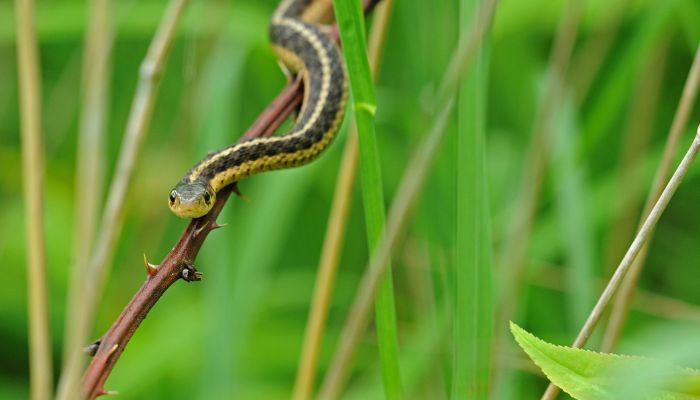
Table of Contents
How the Garter Snake is Adapted To Travel Long Distances
Have you ever wondered just how far these slithering creatures can travel? Well, you’re in for a treat. Let’s dive deep into the world of garter snakes and uncover the secrets behind their impressive travel capabilities.
Garter Snake’s Physical Adaptations
First things first, let’s talk about their physical build. Garter snakes are slender, making them agile and quick. This body structure allows them to cover ground efficiently, whether they’re darting through grass or swimming in water.
Yes, you heard that right! Some species of garter snakes are excellent swimmers, which means they can travel across water bodies when the need arises.
Seasonal Movements and Hibernation
One of the most fascinating aspects of garter snakes is their seasonal movement. As the cold months approach, garter snakes will travel great distances to find the perfect hibernation spot.
Some snakes have been known to travel as far as 20 miles to reach their winter den in places like Manitoba, Canada. Imagine that! A tiny snake traveling the distance of a marathon to find a cozy spot for the winter.
Territorial Behavior and Habitat Range
Garter snakes are territorial creatures. They have specific areas they like to call home, and they’ll often roam within these territories. However, when food is scarce or when it’s time to mate, these snakes can travel outside their usual range, covering significant distances in search of food or a mate.
The Journey to Water Sources
Water is crucial for garter snakes, not just for drinking but also as a habitat. Garter snakes are often found near water sources, and they won’t hesitate to travel to find a pond, stream, or wetland. This affinity for water means that their travel patterns often revolve around the availability of water sources.
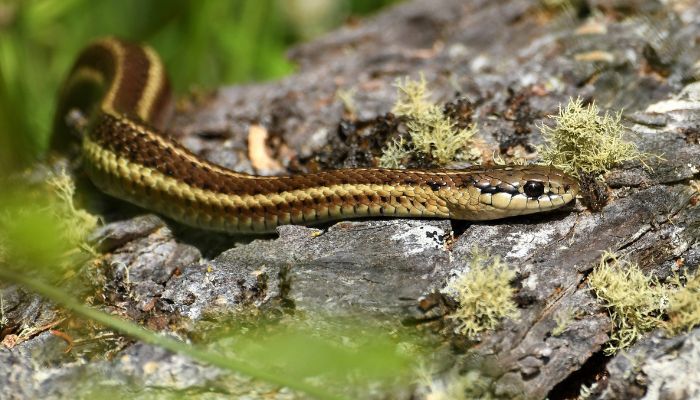
How the Garter Snake Moves Around
Their movement is a mesmerizing dance of muscle coordination and environmental adaptation.
Slithering: The Signature Move
The primary mode of movement for garter snakes, like most snakes, is slithering. This involves a series of muscular contractions that push the snake forward. The snake’s scales provide grip, allowing it to move smoothly over various terrains.
Whether it’s the rough bark of a tree or the soft grass of a meadow, the garter snake can navigate it all.
Climbing and Swimming: Versatility at Its Best
Garter snakes aren’t just limited to the ground. Some species are adept climbers, scaling trees and shrubs in search of prey or a safe resting spot.
And as mentioned earlier, many garter snakes are also proficient swimmers, using a side-to-side motion to propel themselves through water.
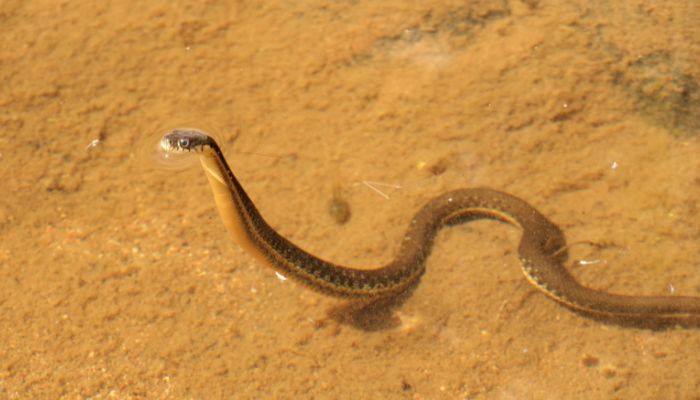
Habitat and Distribution of Garter Snakes
General Habitats: Nature’s Playground
Garter snakes are truly versatile when it comes to their living spaces. They’re equally at home in woodlands, where they can hide under fallen leaves, as they are in meadows and grassy knolls, basking in the sun. Their adaptability to different habitats is one of the reasons they’re so widespread.
Water, Water Everywhere
Water plays a pivotal role in the life of a garter snake. They love being near water sources, be it a serene pond, a flowing river, or a marshy wetland. Not only does it provide them with hydration, but water bodies are also a rich source of food, from tadpoles to small fish.
From Canada to Florida: A Wide Range
Garter snakes have made almost the entirety of North America their home. From the cold regions of Canada to the sunny state of Florida, these snakes have marked their presence. Their adaptability to different climates and habitats is truly commendable.
A Surprise in Alaska
Now, here’s a fun fact that might surprise you. While Alaska isn’t exactly known for its snake population, a garter snake was found near Haines, Alaska, in 2005. It’s a testament to the garter snake’s adaptability and adventurous spirit.
Whether it’s a remnant population or a lone traveler, the presence of a garter snake in Alaska is a testament to their incredible range and adaptability.
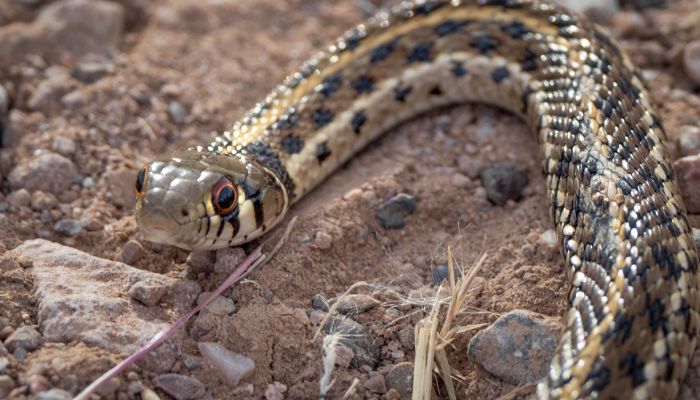
Behavior and Habits
Garter snakes, with their vibrant patterns and curious nature, exhibit a range of behaviors that are both intriguing and essential for their survival.
Daily Hustle: On the Move
A day in the life of a garter snake is quite eventful. They’re diurnal, meaning they’re most active during the day. Their mornings often start with basking in the sun to raise their body temperature.
Once warmed up, they’re on the move, slithering around in search of food, exploring their territory, or simply enjoying the environment.
Defense: More than Just a Hiss
When threatened, garter snakes have a unique defense mechanism. They release a pungent-smelling musk from their glands.
This musk acts as a deterrent, discouraging potential predators from making the snake their next meal. It’s nature’s way of saying, “Back off!”
The Circle of Life: Predators and Threats
Life isn’t always easy for garter snakes. They face threats from various predators like hawks, crows, raccoons, and even larger snakes. Their vibrant patterns, while beautiful, can sometimes make them an easy target. But thanks to their agility and quick reflexes, they often manage to evade danger.
Winter Gatherings: The Big Sleepover
As winter approaches, garter snakes exhibit a fascinating behavior. They gather in large numbers, sometimes in the thousands, to hibernate together in communal dens. These dens offer protection from the cold and predators, making them the perfect winter hideout.
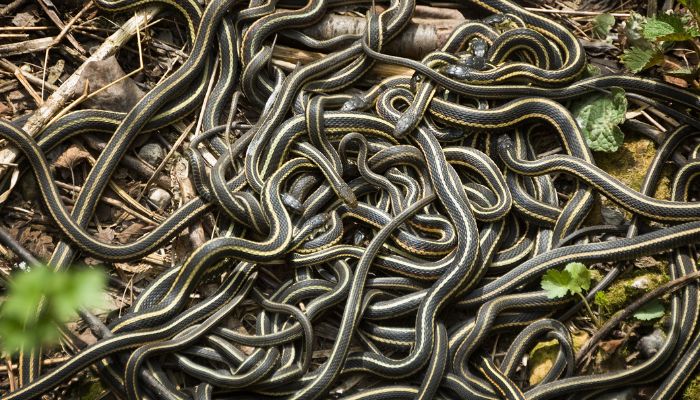
Hibernation Patterns of Garter Snakes
The Chill Factor: Bracing for Winter
When the cold sets in, garter snakes go into hibernation mode. Their metabolism slows down, and they enter a state of dormancy. This period of inactivity allows them to conserve energy and survive the harsh winter months without needing to eat.
The Importance of Communal Dens
Communal dens are more than just a winter retreat for garter snakes. These dens provide warmth, safety, and a sense of community.
By hibernating together, snakes can share body heat, ensuring that they stay warm throughout the winter. These dens can sometimes house multiple species of snakes, all coexisting peacefully.
The Journey to the Perfect Den
Finding the right hibernation spot is crucial for garter snakes. They’re known to travel long distances, sometimes miles away from their summer habitats, to reach their preferred communal dens.
This journey, while perilous, is essential for their survival. It’s a testament to the lengths these snakes will go to ensure they see another spring.
Final Word
You’ve journeyed through the captivating world of garter snakes, discovering their remarkable travel abilities, diverse habitats, and unique behaviors.
These snakes, with their vast range from Canada to Florida, showcase nature’s adaptability at its finest. As you reflect on their intriguing life patterns, remember that nature always has more secrets to unveil.
Stay curious, keep exploring, and let the wonders of the natural world continue to inspire you. Every creature, no matter how small, has a story worth understanding.
FAQ
Let’s tackle some of the most frequently asked questions about garter snakes.
What is the range of a garter snake?
Garter snakes boast an impressive range, spanning almost the entirety of North America. From the chilly regions of Canada to the sun-soaked state of Florida, these snakes have made their mark. Their adaptability to diverse climates and habitats is truly commendable.
Where are the most garter snakes?
While garter snakes are widespread, some of the largest gatherings can be found in places like Manitoba, Canada, especially during hibernation season. Here, thousands of snakes come together in communal dens, creating a spectacle that’s both eerie and fascinating.
Can garter snakes swim?
Absolutely! Many species of garter snakes are proficient swimmers. They use a side-to-side motion to glide through water, whether it’s a serene pond or a flowing river. Their affinity for water also means they’re often found near water sources.
How to find a garter snake den?
Finding a garter snake den requires a keen eye and a bit of patience. Look for areas with loose soil, rocks, or crevices, especially in regions known for large garter snake populations. But remember, if you do stumble upon a den, always observe from a distance and avoid disturbing these magnificent creatures.


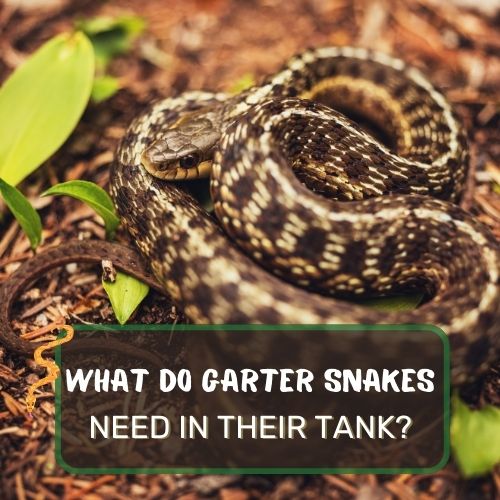
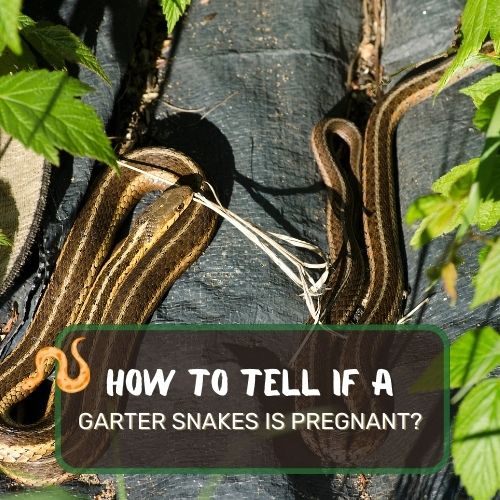
0 Comments